Planning worship?
Check out our sister site, ZeteoSearch.org,
for 20+ additional resources related to your search.
- |
User Links
Person Results
Frances Whitmarsh Wile
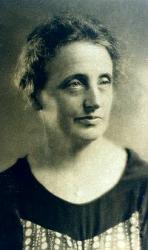
1878 - 1939 Topics: Special Seasons and Services The New Year Author of "All beautiful the march of days" in The Hymnal Wile, Mrs. Frances Whitmarsh. (Bristol Centre, New York, December 2, 1878--July 31, 1939, Rochester, N.Y.). Married A.J. Wile in 1901. Her lovely hymn for use in winter, beginning "All beautiful the march of days" was written about 1907 while she was a parishioner of Rev. William C. Gannett, in Rochester, N.Y., in consultation with him, and was included in Gannett and Hosmer's revised edition of Unity Hymns and Chorals, 1911, from which it passed into The New Hymn and Tune Book, 1914, and Hymns of the Spirit, 1937.
--Henry Wilder Foote, DNAH Archives
================================
Born: 1878, Bristol Valley, New York.
In her later years, Wile lived in Rochester, New York, where she helped found the Women’s City Club.
Hymns:
"All Beautiful the March of Days"
--cyberhymnal.org/bio
Frances Whitmarsh Wile
Anonymous
Topics: The Church at Worship Special Days, Seasons, Occasions: Offering Author of "Grant Us, God, the Grace" in Voices United In some hymnals, the editors noted that a hymn's author is unknown to them, and so this artificial "person" entry is used to reflect that fact. Obviously, the hymns attributed to "Author Unknown" "Unknown" or "Anonymous" could have been written by many people over a span of many centuries.
Anonymous
Albert F. Bayly
1901 - 1984 Topics: The Church at Worship Special Days, Seasons, Occasions: Offering Author of "God of All Good" in Voices United Albert F. Bayly was born on September 6, 1901, Bexhill on Sea, Sussex, England. He received his education at London University (BA) and Mansfield College, Oxford. Bayly was a Congregationalist (later United Reformed Church) minister from the late 1920s until his death in 1984. His life and ministry spanned the Depression of the 1930s, the Second World War, and the years of reconstruction which followed. After retiring in 1971, he moved to Springfield, Chelmsford, and was active in the local United Reformed Church. He wrote several pageants on mission themes, and librettos for cantatas by W. L. Lloyd Webber. He died on July 26, 1984 in Chichester, Sussex, England.
NN, Hymnary editor. Sources: www.hymntime.com/tch and Church Times, an Anglican newspaper, Tuesday 20 October 2015
Albert F. Bayly
Richard S. Newman
1850 - 1927 Topics: Seasons and Special Occasions Composer of "LAND OF REST" in Hymns for Creative Living
Richard S. Newman
Edward Osler
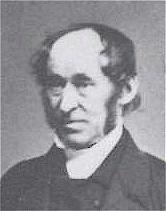
1798 - 1863 Topics: Special Seasons and Services Installations: Pastor Author of "Lord of the Church, we humbly pray" in The Hymnal Osler, Edward, was born at Falmouth in January, 1798, and was educated for the medical profession, first by Dr. Carvosso, at Falmouth, and then at Guy's Hospital, London. From 1819 to 1836 he was house surgeon at the Swansea Infirmary. He then removed to London, and devoted himself to literary pursuits. For some time he was associated with the Society for Promoting Christian Knowledge, both in London and at Bath. In 1841 he became the Editor of the Royal Cornwall Gazette, and took up his residence at Truro. He retained that appointment till his death, at Truro, March 7, 1863. For the Linnaean Society he wrote Burrowing and Boring Marine Animals. He also published Church and Bible; The Voyage: a Poem written at Sea, and in the West Indies, and Illustrated by papers on Natural History, 1830; The Life of Lord Exmouth, 1837, &c. His hymnological work is mainly connected with the Mitre Hymn Book. During 1835-36 he was associated with Prebendary W. J. Hall, the editor, in producing that collection, which was published in 1836 as Psalms and Hymns adapted to The Services of the Church of England. He resided in Mr. Hall's house during the time. From the "hall manuscript" we gather that he contributed 15 versions of the Psalms (5 being rewritten from others), and 50 hymns (a few rewritten). Most of these hymns and Psalm versions, together with others not in the Mitre Hymn Book, were afterwards given in the monthly numbers of his Church and King, from Nov. 1836 to Aug. 1837. The best known of these hymns are, “O God, unseen, yet ever near," and “Worship, honour, glory, blessing." Several of his hymns in common use are:—
1. Father, Whose love and truth fulfil. Holy Baptism.
2. Glory to God! with joyful adoration. Praise to the Father.
3. Great God, o'er earth and heaven supreme. Men the Stewards of God's Bounties.
4. Great God of hosts, our ears have heard. Ps. xliv. Based on the N. Version.
5. Great God, Whose awful mystery. Holy Trinity.
6. I hold the sacred book of God. Martyrs.
7. Jehovah hath spoken, the nations shall hear. Second Advent.
8. Lord, may the inward grace abound. Holy Baptism.
9. May we Thy precepts, Lord, fulfil. Love.
10. Mighty Saviour, gracious King. Advent.
11. 0 God, the help of all Thy Saints. Ps. x.
12. O Thou, the Lord and Life of those. Christ the Life of Men.
13. O Saviour, Who didst come. Easter.
14. Saviour, Whose love could stoop to death. Easter.
15. See, Lord, before Thy mercy seat. For Schools.
16. Set in a high and favoured place. Advent.
17. Wake frem the dead, new life begin. Lent.
18. With trembling awe we come. Lent.
Several of these hymns are not in Osier's Church and King. We have ascribed them and others to him on the authority of the "hall MSS." It must be noted also that the text in the Church and King often differs from that in the Mitre.
--John Julian, Dictionary of Hymnology (1907)
Though not mentioned by Julian, perhaps his most enduring contribution to hymnody is the third stanza of "Praise the Lord! Ye Heavens, Adore Him", whose first two stanzas are of anonymous authorship.
--Leland Bryant Ross (2019)
Edward Osler
Johann Balthasar König
1691 - 1758 Topics: The Church at Worship Special Days, Seasons, Occasions: Offering Composer of "FRANCONIA" in Voices United Johann Balthasar König; b. 1691, Waltershausen, near Gotha; d. 1758, Frankfort
Evangelical Lutheran Hymnal, 1908
Johann Balthasar König
Thomas B. Southgate
1814 - 1868 Person Name: Thomas Bishop Southgate Topics: Special Seasons Evening Composer of "" in Hymnal Southgate, Thomas Bishop, born at Hornsey, Middlesex, June 8, 1814; educated in the school of the Chapel Royal, where he was a chorister; studied harmony under Thomas Attwood and Sir John Goss, and the organ under Samuel Wesley; organist of Hornsey Church from 1834 to 1853, and of St Anne's, Highgate Rise, London, from the latter year until his death, which occured at Highgate, November 3, 1868.
EVENSONG, No. 320 F.C.H., was published in sheet form in 1858, set to the words "God that madest earth and heaven."
--James Love, Scottish Church Music: Its Composers and Sources (1891)
Thomas B. Southgate
Johann Steuerlein
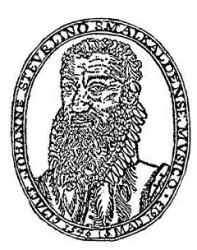
1546 - 1613 Person Name: Johann Steurlein Topics: The Church at Worship Special Days, Seasons, Occasions: Thanksgiving Composer of "WIE LIEBLICH IST DER MAIEN" in Voices United Johann Steuerlein (b. Schmalkalden, Thuringia, Germany, 1546; d. Meiningen, Germany, 1613) studied law at the University of Wittenberg. From 1569 to 1589 he lived in Wasungen near Meiningen, where he served as town clerk as well as cantor and organist in the Lutheran church. From 1589 until his death he lived in Meiningen, where at various times he served as notary public, mayor, and secretary to the Elector of Saxony. A gifted poet and musician, Steurlein rhymed both the Old and New Testaments in German. A number of his hymn tunes and harmonizations were published in Geistliche Lieder (1575) and Sieben und Zwantzig Neue Geistliche Gesenge (1588).
Bert Polman
Johann Steuerlein
Johann Sebastian Bach
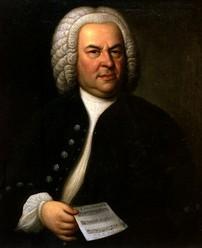
1685 - 1750 Person Name: Johann Sebastian Bach (1685-1750) Topics: Special Seasons and Services Dedication Services: Church Arranger of "HERR JESU CHRIST" in The Hymnal Johann Sebastian Bach was born at Eisenach into a musical family and in a town steeped in Reformation history, he received early musical training from his father and older brother, and elementary education in the classical school Luther had earlier attended.
Throughout his life he made extraordinary efforts to learn from other musicians. At 15 he walked to Lüneburg to work as a chorister and study at the convent school of St. Michael. From there he walked 30 miles to Hamburg to hear Johann Reinken, and 60 miles to Celle to become familiar with French composition and performance traditions. Once he obtained a month's leave from his job to hear Buxtehude, but stayed nearly four months. He arranged compositions from Vivaldi and other Italian masters. His own compositions spanned almost every musical form then known (Opera was the notable exception).
In his own time, Bach was highly regarded as organist and teacher, his compositions being circulated as models of contrapuntal technique. Four of his children achieved careers as composers; Haydn, Mozart, Beethoven, Mendelssohn, Schumann, Brahms, and Chopin are only a few of the best known of the musicians that confessed a major debt to Bach's work in their own musical development. Mendelssohn began re-introducing Bach's music into the concert repertoire, where it has come to attract admiration and even veneration for its own sake.
After 20 years of successful work in several posts, Bach became cantor of the Thomas-schule in Leipzig, and remained there for the remaining 27 years of his life, concentrating on church music for the Lutheran service: over 200 cantatas, four passion settings, a Mass, and hundreds of chorale settings, harmonizations, preludes, and arrangements. He edited the tunes for Schemelli's Musicalisches Gesangbuch, contributing 16 original tunes. His choral harmonizations remain a staple for studies of composition and harmony. Additional melodies from his works have been adapted as hymn tunes.
--John Julian, Dictionary of Hymnology (1907)
Johann Sebastian Bach
William Croft
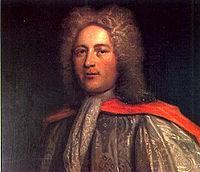
1678 - 1727 Topics: Special Seasons and Services Dedication Services: Church Composer (probable) of "ST. ANNE" in The Hymnal William Croft, Mus. Doc. was born in the year 1677 and received his musical education in the Chapel Royal, under Dr. Blow. In 1700 he was admitted a Gentleman Extraordinary of the Chapel Boyd; and in 1707, upon the decease of Jeremiah Clarke, he was appointed joint organist with his mentor, Dr. Blow. In 1709 he was elected organist of Westminster Abbey. This amiable man and excellent musician died in 1727, in the fiftieth year of his age. A very large number of Dr. Croft's compositions remain still in manuscript.
Cathedral chants of the XVI, XVII & XVIII centuries, ed. by Edward F. Rimbault, London: D. Almaine & Co., 1844
William Croft


 My Starred Hymns
My Starred Hymns


